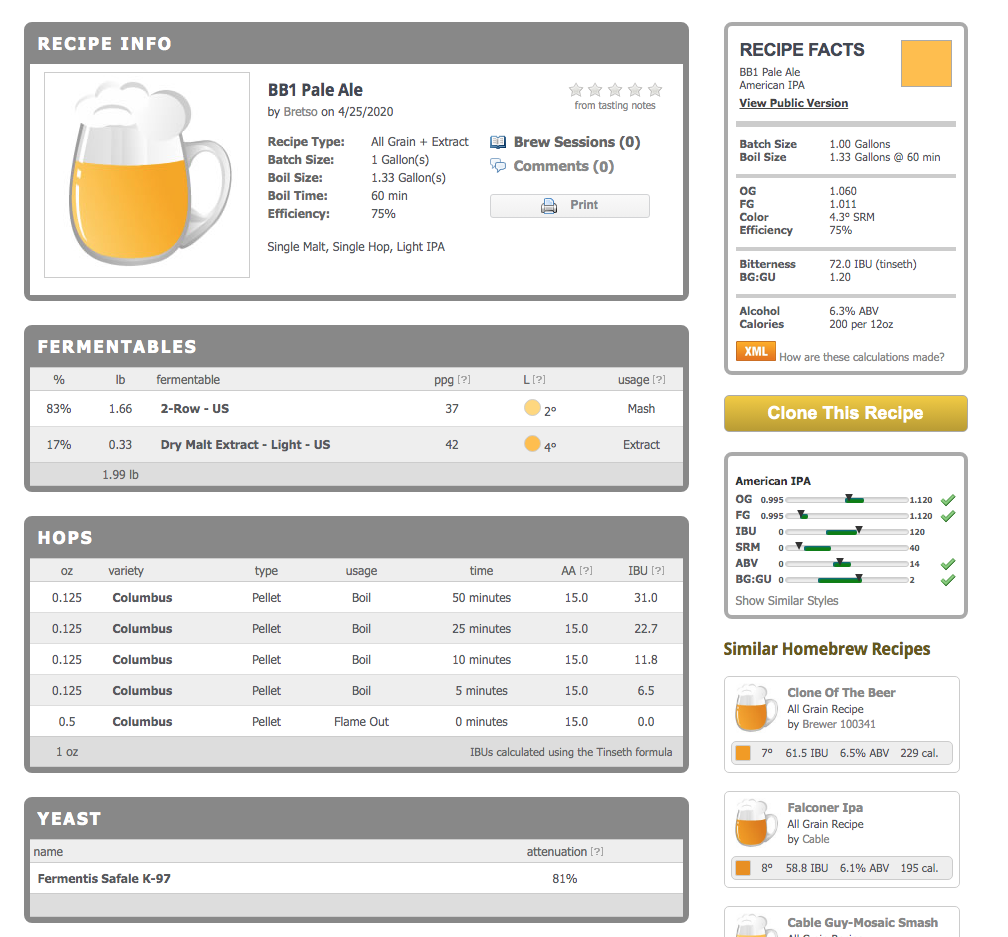Bretso
Member
- Joined
- May 1, 2020
- Messages
- 8
- Reaction score
- 2
Hello all. Just getting started and set up.
Brewing seems like a great hobby while we're all trapped at home.
I have tried two different one gallon IPA kits from Brooklyn Brew Shop.
Their recipes seem simple enough so I plugged in some bulk ingredients in a recipe builder so I can try my first truly homemade beer.
How do you think this one will turn out?
(Edit: I did this in a Proper recipe builder as well - Brewer's Friend link)
Any advice is appreciated.

Brewing seems like a great hobby while we're all trapped at home.
I have tried two different one gallon IPA kits from Brooklyn Brew Shop.
Their recipes seem simple enough so I plugged in some bulk ingredients in a recipe builder so I can try my first truly homemade beer.
How do you think this one will turn out?
(Edit: I did this in a Proper recipe builder as well - Brewer's Friend link)
Any advice is appreciated.

Last edited:






![Craft A Brew - Safale S-04 Dry Yeast - Fermentis - English Ale Dry Yeast - For English and American Ales and Hard Apple Ciders - Ingredients for Home Brewing - Beer Making Supplies - [1 Pack]](https://m.media-amazon.com/images/I/41fVGNh6JfL._SL500_.jpg)


















































